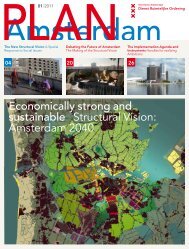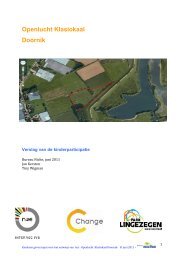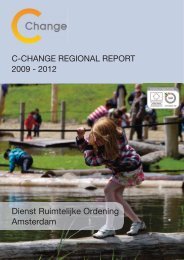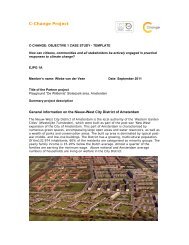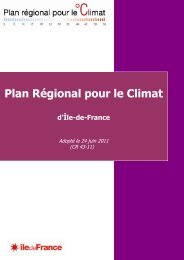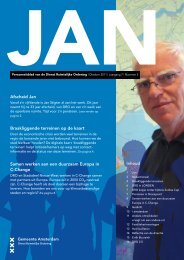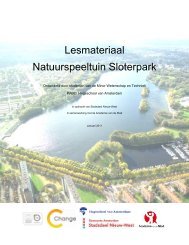Saarland Regional Report - C-Change
Saarland Regional Report - C-Change
Saarland Regional Report - C-Change
You also want an ePaper? Increase the reach of your titles
YUMPU automatically turns print PDFs into web optimized ePapers that Google loves.
C-<strong>Change</strong> also involved the implementation of a<br />
“Landscape and Climate <strong>Change</strong>“ pilot project by the<br />
Spatial Planning Department in the Northern Landscape<br />
of Industrial Culture (NLIC). Two joint workshops with<br />
local actors led to a set of adaptation as well as<br />
mitigation measures for the sub-region. The measures<br />
focus on nature and landscape, not least of all because<br />
NLIC is the location of Germany’s very first federal largescale<br />
nature conservation project to be implemented in<br />
an urban-industrial area. Of particular importance here<br />
are the involvement of local potentials and activities,<br />
ensuring coordination with the large-scale nature<br />
conservation project, and the development of initial ideas<br />
for projects and measures. The project ended up with<br />
an intermunicipal action programme.<br />
Within the C-<strong>Change</strong> project Saarbrücken puts an<br />
emphasis on the climatic relevance of open spaces.<br />
Open spaces are of particular importance for the urban<br />
climate and more accessible for adaptation measures<br />
than urban architectural structures. A starting point<br />
is provided by the Saarbrücken Open Space<br />
Development Programme (OSDP), which has<br />
established itself as a successful instrument of open<br />
space policy since 2008. However, the spatial impacts<br />
of climate change have not been integrated so far. On<br />
this basis Saarbrücken participates in the German<br />
Federal Institute for Research on Building, Urban Affairs<br />
and Spatial Development (BBSR) research programme<br />
“Experimental Housing and Urban Development“<br />
(ExWoSt) dealing with “Urban Strategies Towards<br />
Climate <strong>Change</strong>”. The programme serves to examine<br />
how cities across the nation can prepare for the<br />
consequences of climate change. Saarbrücken is one of<br />
nine model cities. The C-<strong>Change</strong> project provided a first<br />
stimulus for offensively integrating mitigation and in<br />
particular climate adaptation strategies in the Open<br />
Space Development Programme, but also important<br />
stimuli for an urban development which adequately<br />
addresses climate change.<br />
There were three main aspects pursued in the context of<br />
the OSDP:<br />
• Building on a vulnerability analysis for the overall city<br />
and a well-founded assessment of the climatic relevance<br />
of various types of open space, adaptation strategies<br />
and options have been elaborated for the planning of<br />
urban open spaces. That was the contribution of<br />
C-<strong>Change</strong>. On this basis, concrete measures have been<br />
developed in two urban districts as part of the ExWoSt<br />
pilot project.<br />
TITLE: Vulnerability of settlement areas in Saarbrücken<br />
regarding heat stress (source: agl 2012)<br />
3





